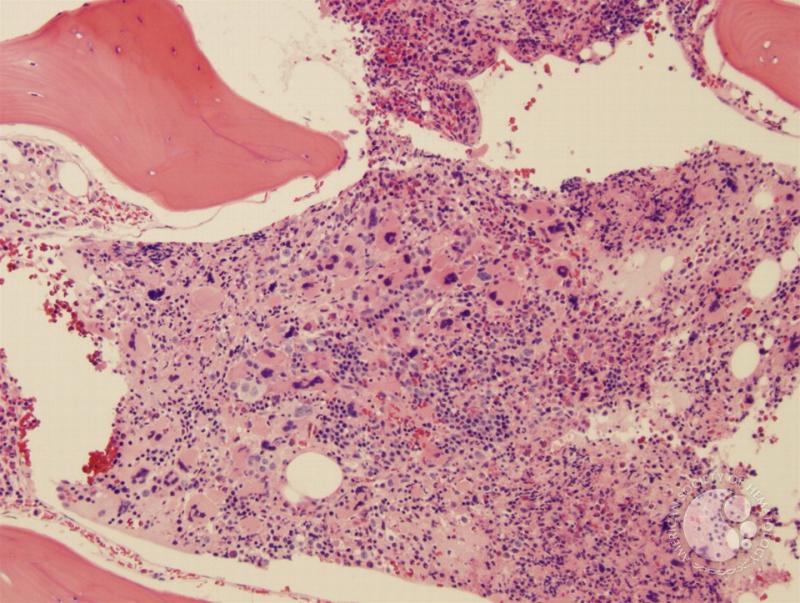Myelofibrosis is a chronic disorder characterized by the abnormal proliferation of bone marrow cells leading to severe fibrosis or scarring of the bone marrow, which disrupts the body’s ability to produce blood cells properly. This condition falls under the umbrella of myeloproliferative neoplasms and typically presents with symptoms such as fatigue, anemia, enlarged spleen (splenomegaly), and bone pain. Treatment for myelofibrosis has evolved significantly over recent years, incorporating both conventional therapies and novel agents targeting the molecular abnormalities driving the disease.
Current Medical Therapies and Drug Treatments for Myelofibrosis
Myelofibrosis Treatment often depends on the severity of symptoms, risk stratification based on genetic mutations, and patient-specific factors such as age and overall health. Traditionally, treatment modalities included supportive care such as blood transfusions for anemia and medications to manage symptoms. However, the advent of targeted therapies has transformed the landscape of management.
JAK inhibitors have emerged as a cornerstone in the treatment of myelofibrosis. These oral agents specifically inhibit the Janus kinase (JAK) pathway, which is frequently overactive in patients with myelofibrosis. Drugs such as ruxolitinib and fedratinib have received regulatory approval due to their ability to reduce splenomegaly and improve constitutional symptoms, including fatigue and night sweats. These medications also have shown potential for improving survival outcomes in some patient subsets.
Beyond JAK inhibitors, other drug classes including immunomodulators like thalidomide and lenalidomide have been explored to enhance hematopoiesis and reduce splenic size. Additionally, hypomethylating agents such as azacitidine have shown efficacy in cases with transformation to acute leukemia or advanced myelofibrosis.
Role of Stem Cell Transplantation in Myelofibrosis Treatment Approach
Allogeneic hematopoietic stem cell transplantation (HSCT) remains the only potentially curative treatment for myelofibrosis. This intensive procedure involves replacing the patient’s diseased bone marrow with healthy donor marrow, which helps restore normal hematopoiesis and may reverse fibrosis. However, due to the high risk of complications and treatment-related mortality, HSCT is typically reserved for younger and high-risk patients with acceptable performance status.
Advancements in conditioning regimens and donor matching have improved transplant outcomes significantly. Reduced-intensity conditioning (RIC) protocols now allow older patients or those with comorbidities to undergo HSCT with fewer toxic side effects. Ongoing research aims to identify the optimal timing for transplantation and refine patient selection criteria, balancing benefits against risks.
Emerging Targeted Therapies and Clinical Trials in Myelofibrosis
The ongoing pipeline of investigational agents provides hope for better disease control and improved quality of life for myelofibrosis patients. Numerous clinical trials are actively evaluating novel targeted therapies, either as monotherapy or in combination with existing treatments.
Newer agents targeting alternative pathways involved in fibrosis, cytokine production, and marrow microenvironment regulation are under development. For instance, inhibitors targeting BET proteins, anti-fibrotic compounds, and agents modulating inflammatory signaling are showing promise in early-phase studies. These advances reflect an increased understanding of the molecular pathogenesis driving myelofibrosis.
Evaluating the latest clinical trial data is essential for clinicians aiming to tailor therapy to individual patient profiles. These trials include randomized controlled designs and real-world observational studies that assess efficacy, safety, and tolerability, providing insights into long-term management strategies.
Navigating Market Research Reports on Myelofibrosis Therapeutics and Trends
Healthcare professionals, pharmaceutical companies, and investors seeking detailed insights into the current and future treatment landscape of myelofibrosis can benefit from thorough market research reports. These documents typically contain comprehensive data on drug pipeline analysis, competitive landscape, epidemiology, and emerging technological innovations.
Detailed analyses of key players involved in the development and commercialization of myelofibrosis therapies provide a clear understanding of strategic directions in the industry. Market forecasts help stakeholders anticipate demand for new therapies considering demographic changes and evolving clinical guidelines.
Accessing in-depth market intelligence and therapeutic area reports helps facilitate informed decision-making regarding research investments, product development, and market entry strategies specific to myelofibrosis. Such content serves as an invaluable resource for navigating this dynamic and rapidly progressing field.
Technological Innovations Enhancing Myelofibrosis Diagnosis and Treatment Monitoring
The management of myelofibrosis increasingly depends on technological advancements in diagnostic and monitoring tools. Molecular genetic testing and next-generation sequencing (NGS) have become standard in identifying mutations such as JAK2, MPL, and CALR, which influence prognosis and treatment choices.
Improvements in imaging techniques, including magnetic resonance imaging (MRI) and ultrasonography, enable more precise monitoring of spleen size and fibrosis progression. Additionally, the integration of digital health tools and wearable devices provides new opportunities to track patients’ symptom burden and treatment response in real time.
These innovations not only enhance the accuracy of diagnosis but also facilitate personalized treatment approaches, guiding therapy adjustments and potentially improving patient outcomes.
the treatment landscape for myelofibrosis continues to evolve with the introduction of advanced targeted therapies, refined transplantation protocols, and emerging clinical research. A deeper understanding of disease biology combined with sophisticated diagnostic technologies is paving the way for more effective and individualized care strategies. For stakeholders in healthcare and pharmaceuticals, staying informed through specialized market reports and scientific updates is critical to navigating and capitalizing on developments within this complex therapeutic area.
Get this Report in Japanese Language: 骨髄線維症の治療
Get this Report in Korean Language: 골수섬유증 치료
Read More Articles Related to this Industry
Regulatory Pathways and Approval Strategies for Infertility Drugs: A Guide for Companies
About Author:
Money Singh is a seasoned content writer with over four years of experience in the market research sector. Her expertise spans various industries, including food and beverages, biotechnology, chemical and materials, defense and aerospace, consumer goods, etc. (https://www.linkedin.com/in/money-singh-590844163)
